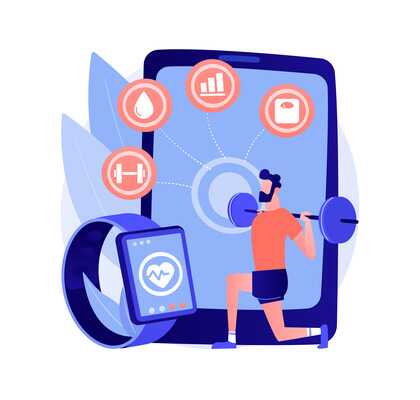Future-Proof Your SEO: Harness the Potential of Voice Search Optimization!
With the rapid advancement of technology, voice search has become an increasingly popular method for obtaining information. From virtual assistants like Siri and Alexa to voice-activated smart speakers, people are embracing the convenience and efficiency of voice-based interactions. As a result, businesses must adapt their SEO strategies to stay ahead in the ever-evolving digital landscape. In this article, we will explore the concept of voice search optimization and provide actionable insights to future-proof your SEO efforts. In the digital age, voice search is revolutionizing the way people access information. Traditional text-based searches are gradually being replaced by voice commands, thanks to the advancements in natural language processing and voice recognition technology. The convenience of speaking queries aloud and receiving immediate responses has led to a significant rise in voice search usage. Understanding the importance of voice search optimization is crucial for businesses aiming to maintain their online visibility and engage with their target audience effectively. By optimizing your website and content for voice search, you can harness the full potential of this emerging trend and stay ahead of the competition. To effectively optimize for voice search, it is essential to understand how it works and the key differences compared to text-based search. While text-based searches involve typing keywords into a search engine, voice search relies on spoken queries. Users typically interact with voice assistants or voice-activated devices to perform these searches. Voice search queries tend to be longer and more conversational in nature compared to their text-based counterparts. Understanding these nuances is vital for crafting content that aligns with user intent and captures the attention of voice search users. Optimizing your website and content for voice search can bring several benefits to your business. Firstly, it enhances the user experience by providing quick and accurate answers to users’ queries. Voice search technology enables users to obtain information hands-free, making it particularly useful in situations where typing is inconvenient or impossible. Additionally, voice search optimization can drive increased website traffic and conversions. As voice assistants become more prevalent across various devices, businesses that have adapted to this trend are more likely to appear in voice search results, attracting a larger audience and increasing the chances of conversions. To effectively optimize for voice search, keyword research plays a crucial role. Traditional keyword research methods may not fully capture the long-tail keywords and question-based phrases used in voice search queries. It is essential to identify and target these specific keywords to align your content with user intent. Furthermore, structuring your content to accommodate voice search is essential. Consider organizing your content in a conversational format, anticipating common questions and providing comprehensive answers. This approach ensures that your content aligns with the natural language patterns used in voice search queries. When optimizing for voice search, it is vital to create content that sounds natural and conversational. Write in a language that resonates with your target audience, using personal pronouns and an informal tone. By adopting a conversational writing style, you can engage the reader and establish a connection. Additionally, incorporating long-tail keywords and question-based phrases into your content is key. These types of keywords often align with voice search queries and can help your content rank higher in voice search results. By understanding your target audience’s common questions and concerns, you can create valuable content that meets their needs.
In the age of voice assistants, businesses that prioritize voice search optimization will have a competitive edge in the digital landscape.
– Olivia Smith Apart from content optimization, technical aspects of your website also play a crucial role in voice search optimization. Ensuring that your website is mobile-friendly and has a responsive design is essential, as voice searches are often performed on mobile devices. A seamless and user-friendly mobile experience contributes to better voice search rankings. Optimizing website speed and performance is equally important. Voice search users expect immediate responses, and slow-loading websites can lead to a poor user experience. Optimizing your website’s speed and performance can help you retain visitors and improve your voice search rankings. Schema markup is a powerful tool that helps search engines understand the context and structure of your content. Implementing schema markup can enhance your chances of appearing in voice search results by providing search engines with valuable information about your content. By leveraging schema markup, you can mark up specific elements of your content such as reviews, ratings, and FAQs. This structured data enables search engines to provide more informative and detailed responses to voice search queries, increasing your visibility and attracting potential customers. For businesses with a local presence, optimizing for local queries is crucial. Local SEO strategies can be effectively combined with voice search optimization to capture a highly targeted audience. Voice search users often seek location-based information, such as nearby businesses or services. By optimizing your website and content for local queries, you can increase your chances of appearing in voice search results when users search for local businesses. Utilize local keywords, create location-specific content, and ensure your business information is consistent and accurate across various online directories. Featured snippets play a significant role in voice search results. These snippets provide concise answers to user queries and are often read aloud by voice assistants. Optimizing your content for featured snippets increases your chances of being the preferred source for voice search responses. To optimize for featured snippets, focus on creating comprehensive and structured content that directly answers commonly asked questions. Utilize headers, bullet points, and tables to present information clearly and concisely. By aligning your content with featured snippet guidelines, you can increase your visibility in voice search results. As with any SEO strategy, monitoring and analyzing your voice search performance is essential. Keep track of your voice search rankings and the traffic generated through voice search queries. Analyze user behavior and intent by studying the specific queries that drive users to your website. By understanding how users interact with your website through voice search, you can identify areas for improvement and make data-driven decisions to enhance your voice search optimization efforts. Voice search technology is continuously evolving, and staying ahead of future trends is crucial for long-term success. Advancements in voice recognition technology are enabling more accurate and personalized voice interactions. Additionally, voice assistants are being integrated into various devices, including cars, appliances, and wearables. As voice search becomes more ubiquitous, businesses need to adapt their SEO strategies to embrace these advancements. Exploring voice-activated advertising, optimizing for specific voice assistants, and leveraging voice search data for personalized marketing are just a few areas that will shape the future of voice search optimization. In conclusion, future-proofing your SEO efforts requires harnessing the potential of voice search optimization. Voice search is transforming the way people access information, and businesses must adapt their strategies accordingly. By understanding how voice search works, optimizing content for conversational queries, and staying on top of technical considerations, you can position your business for success in the voice search era. Voice search optimization offers numerous benefits, including enhanced user experiences, increased website traffic, and improved conversions. By leveraging schema markup, local SEO strategies, and optimizing for featured snippets, you can further boost your visibility in voice search results. Monitoring and analyzing voice search performance allows you to refine your strategies and stay ahead of future trends. Embrace the power of voice search optimization and ensure your business remains relevant and competitive in the ever-evolving digital landscape.Introduction
Understanding voice search
Benefits of voice search optimization
Optimizing for voice search



Creating conversational content
Technical considerations for voice search optimization
Leveraging schema markup
Local SEO and voice search
Voice search and featured snippets
Monitoring and analyzing voice search performance
Future trends in voice search
Conclusion













































